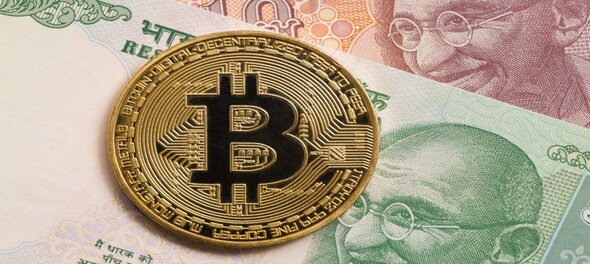
While presenting her fourth union budget, Nirmala Sitharaman announced the launch of a Reserve Bank of India (RBI)-backed digital currency or Digital Rupee, to give a big boost to the digital economy."
Sitharaman said the RBI will issue a Digital Rupee using the blockchain and other technologies starting 2022-23, which she said, "will also lead to a more efficient and cheaper currency management system."
Here's all you need to know about what a CBDC is and how they are different from other virtual assets like Bitcoin.
What is a CBDC?
Central bank digital currencies (CBDCs) are legal tender created by the central bank of a nation, though in digital form. The only difference between them and traditional cash or fiat currency is that CBDCs are digital.
Unlike other cryptocurrencies that are DeFi or decentralised financial tokens, CBDCs will be backed by central reserves just like all other fiat currencies. The digital rupee is essentially going to be the digital representation of a rupee backed by the Reserve Bank of India (RBI).
India is not the only country that is experimenting with a digital legal tender. The digital dollar, e-yuan, and digital euro are some of the projects that various central banks are experimenting with across the world.
Why are central banks issuing digital currencies?
Countries are looking towards CBDCs for a few key advantages -- reduced printing costs, decreased settlement risks, avoidance of time zone issues, and cost-effective globalisation of payment systems.
Another important factor about the growing interest of central banks towards CBDCs is to wean away citizens from private virtual currencies that may potentially harm them.
For India in particular, another benefit of RBI’s CBDC is that India’s high currency to GDP ratio could be reduced if cash usage is reduced by CBDC introduction. While India has made huge strides in digital payments with UPI, the significant displacement of cash is still a challenge due to the anonymity that cash offers.
How is it different from Bitcoin?
Unlike Bitcoin, which is a cryptocurrency built on the underlying blockchain technology allowing users to remain anonymous, the official digital currency will have the backing of the RBI. It means that the digital rupee is as good as a physical rupee for all transactions. A digital rupee will have the same value as the physical rupee.
Cryptocurrencies like Bitcoin do not have an inherent value. They are volatile and can pose huge risks to investors, as seen by sudden and rapid drops in value due to external factors. Cryptocurrencies are peer-to-peer assets that are not controlled by any authority or intermediary issuer. Bitcoin also works using a decentralised blockchain.
(Edited by : Shoma Bhattacharjee, Yashi Gupta)
First Published: Nov 26, 2021 6:28 PM IST
Check out our in-depth Market Coverage, Business News & get real-time Stock Market Updates on CNBC-TV18. Also, Watch our channels CNBC-TV18, CNBC Awaaz and CNBC Bajar Live on-the-go!


Jharkhand Lok Sabha elections 2024: All about INDIA bloc candidates
May 14, 2024 2:52 PM
SAD's Harsimrat Kaur declares assets worth ₹135 crore
May 14, 2024 1:18 PM
PM Modi files nomination for 3rd term from Varanasi Lok Sabha seat
May 14, 2024 10:15 AM

